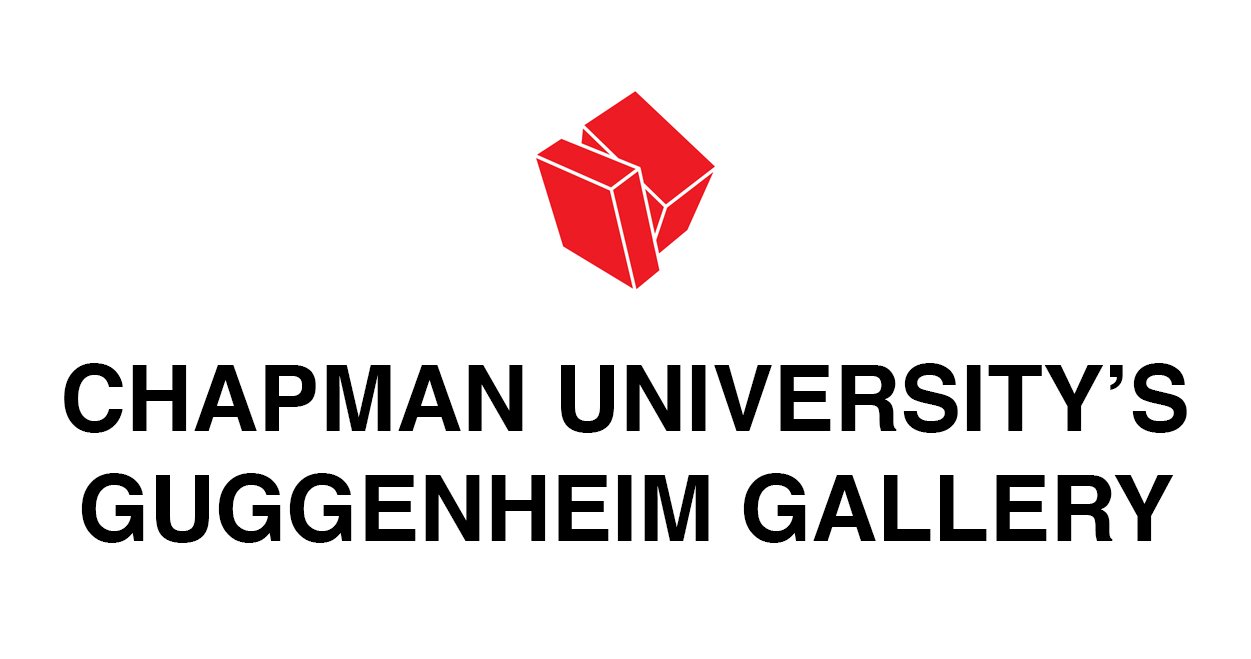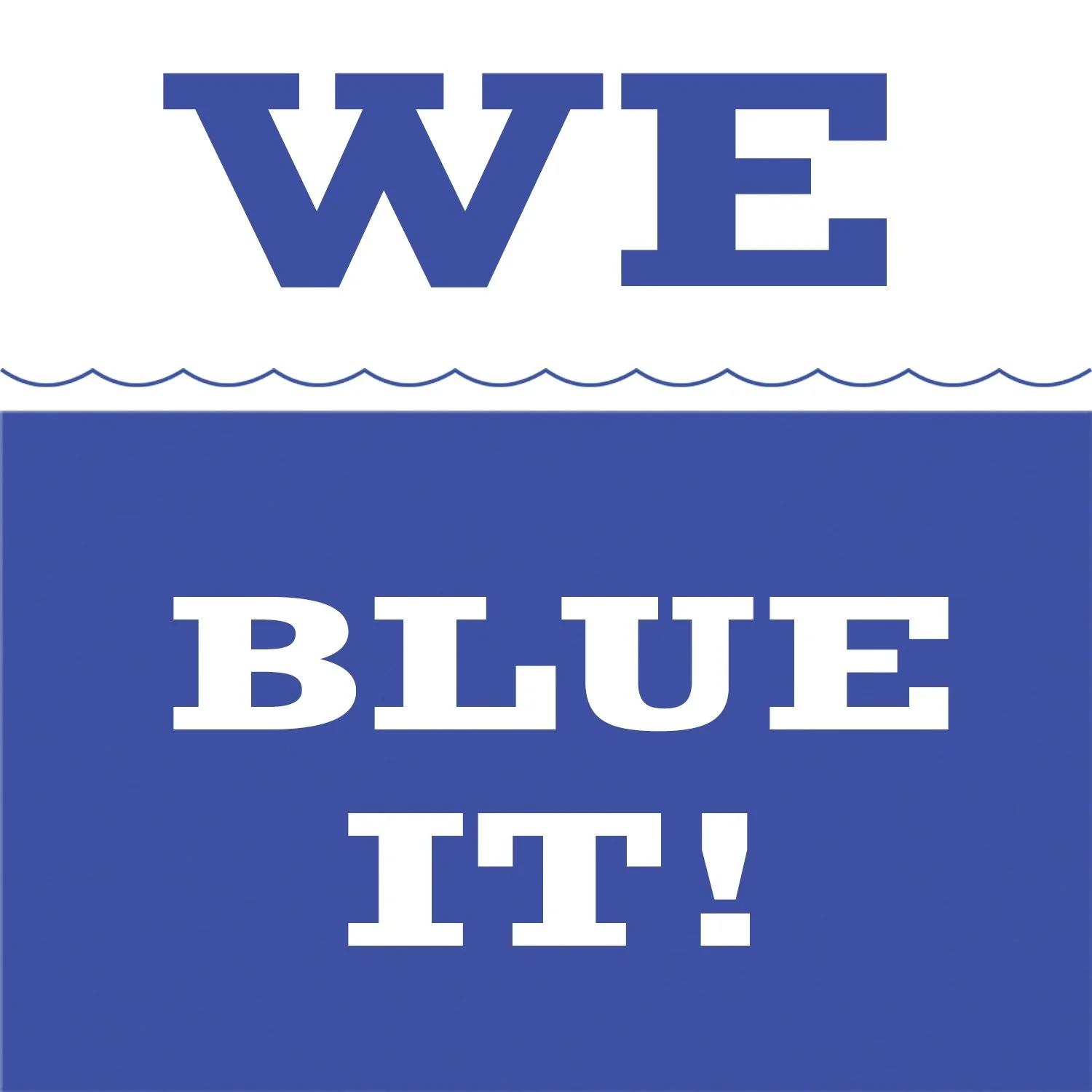SKYLAR HASKARD: WE BLUE IT!
October 15 – November 22, 2025
Guggenheim Gallery, Chapman University
Join us for the campus celebration on Wednesday, October 15, 2025 (3–5 p.m.), and the opening reception on Sunday, October 19 (3–6 p.m.).
Skylar Haskard’s exhibition WE BLUE IT! stages precarious monuments and improvisational approximations to histories of storytelling, bridging Greco-Roman friezes and American cartoons. Centered on plaster-cast and mannequin reliefs mounted on upended trampolines, the works fuse the pictorial with the sculptural, advancing Haskard’s ongoing engagement with makeshift materials. The trampoline becomes wall, portal, and stage simultaneously, an unstable architecture holding figural fragments like embroidery on canvas.
These recent works, Haskard’s most pictorial to date, recall antiquity’s depictions of mythic scenes and evoke half-beast, half-human figures from Roman Gigantomachy friezes. Abstracted and reimagined through exaggerated features, dentures, dog snouts reminiscent of Disney’s Goofy, and turn-of-the-century laborers carrying shovels, rakes, bones, and found objects, the works produce an eccentric, layered visual language.
The image of the dog as humankind’s companion, conjugated through history, from spiritual guide to loyal laborer’s ally, from hobo wanderer to comic foil, emerges here as a symbol of tragicomic survival. Violent, scrappy, and absurdly cartoonish, the imagery conjures both monumental friezes such as the Pergamon Altar or the Column of Marcus Aurelius, and the irreverence of Peanuts and early animation. Mythological gravitas is juxtaposed with the slapstick sensibility of comics.
Beneath these images lies a reflection on the wandering labor force of the early 20th century: hobos displaced by mechanization who carried tools and music along railway lines, regrouping in urban centers as some of the earliest unions when rural labor opportunities dwindled. Alluding to traditions of politically engaged art, as exemplified by Diego Rivera’s murals, and to the radical organizing of the Industrial Workers of the World (the “Wobblies”), the exhibition links the poetry and tragedy of the hobo figure to the emergence of organized labor. Mythic characters, poets, workers, and drifters reappear in Haskard’s reliefs, fractured across the salvaged surfaces of trampolines.
As a symbol of domestic fragility, the trampoline, long a fixture of family life and suburban play, often ends up damaged and abandoned in the Los Angeles sprawl. Recast in Haskard’s narratives, it becomes a precarious monument that connects housing insecurity and itinerant labor with the unstable promise of the American dream. By turning the trampoline upright as the work’s surface, Haskard inverts the traditional function of classical friezes: once carved in stone to narrate imperial triumphs, the frieze here becomes a counter-monument. These reliefs are expressive, more akin to performance than to polished artifact. Circular portals evoke classical architecture and suggest notions of transhistorical or interdimensional travel, yet remain porous, unstable, and vulnerable to collapse; a parody of permanence and a scrappy reversal of authority.
The exhibition’s title, WE BLUE IT!, sets the tone: “blue” as the color of labor and the halftone fields of comics, but also of indigo and ultramarine pigments historically bound to colonial wealth, imperial grandeur, and a melancholy of decline. Haskard extends this lineage, casting blue as both a marker of cultural extraction and a register of improvisation: from the blue notes of jazz to the flat tones of comic strips, linking ancient plunder to contemporary modes of work, play, and survival.
A suite of drawings accompanies the sculptures, each depicting a caged Snoopy adrift on open water beneath the inscription “‘Tis not too late to seek another world,” drawn from Lord Alfred Tennyson’s Ulysses written in 1833. In the poem, the aging hero rejects stability and domestic rule in favor of perpetual questing; read against Haskard’s imagery, this striving resonates with both the hobo figure and Snoopy, wanderers of different orders, suspended between comic fantasy and the reality of displacement. If the trampoline in Haskard’s reliefs suggests bounce, risk, and improvisation, the cage offers its inverse: a rigid structure that immobilizes, floating without agency or direction. At first glance it resembles a boat, yet its buoyancy appears uncertain. On reflection, it seems fated to sink, caught in suspension. Snoopy, the freest figure in Peanuts, and perhaps an emblem of the quintessential artist, always open to experimentation and beginning again, is here bound to passivity.
As a global cultural icon, this image refers not only to Haskard’s artistic concerns but, in conjunction with the exhibition’s title, also raises broader socio-political and ecological implications. It is as if the brave, innocent, and creative spirit of humanity itself were trapped, incarcerated by the omnipresent machinery of production and consumption, and by a waning willingness to confront our species’ multiple predicaments: above all, societal collapse into savagery and ecological catastrophe.
The installation sets heavy histories against improvisational form. The tragic becomes comic, the monumental turns slapstick, and Haskard reimagines the frieze as a space of both violence and play. WE BLUE IT! stages a dialogue between antiquity, the upheavals of early 20th-century labor, and the present moment; between mythic beasts and wandering workers, cultural memory and improvisation. These works are monuments undone, turned inside out and made to tremble on their feet.
Skylar Haskard’s practice challenges the conventional boundaries of sculpture by employing everyday materials to interrogate social structures and lived experience. His work combines found objects, body casts, and temporary constructions to explore themes of marginalization, labor, and the realities of life outside dominant social frameworks. Recent exhibitions have addressed the aesthetics of economy and transient culture. Haskard continues to question how bodies and objects function within systems of power, rethinking the compositional limits of sculpture, its beginnings, endings, and relation to site. His works often merge with or bleed into their environments, resisting fixed form and emphasizing fluid and shifting phenotypes.
WE BLUE IT! is part of Chapman University’s Engaging the World series, which in Fall 2025 centers on Building Resilient Futures. This year’s iteration explores the intersections of social, political, and environmental issues, addressing the complexities of power, innovation, and resilience in the face of climate crisis and sociopolitical upheaval. Through his sculptural investigations, Haskard contributes to this dialogue by offering a reflection on how environments, both physical and social, are shaped by power and its expression. Storytelling becomes integral to this process: fractured, provisional, and often embedded within the material conditions of the work. His sculptures rethink not only form, site, and scale, but also the narrative possibilities of relief, tracing stories that blur conventional beginnings and endings, and unfold across bodies, ob

